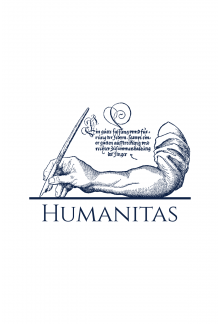- Titulinis
- Dalykinė ir mokslinė literatūra
- Medicinos knygos
- Introduction to Critical Care Nursing

Introduction to Critical Care Nursing
Autorius : Marthe J. Moseley
Leidimo metai: 2020
Leidėjas: Elsevier
Leidinio kalba: Anglų
Formatas: Minkšti viršeliai
<p>Start here to master the concepts, technology, and procedures of critical care nursing! <b>Introduction to Critical Care Nursing, 8th Edition </b>prepares you to provide safe, effective, patient-centered care in a variety of high-acuity, progressive, and critical care settings. Evidence-based coverage includes realistic case studies and incorporates the latest advances in critical care. Disorders are conveniently organized by body system or special situation, and nursing management chapters include quick-reference nursing care plans. This clear, concise textbook will help you develop the knowledge and clinical reasoning skills needed for success in today's highly complex critical care environments.</p><ul><b> <li>Critical Reasoning Activities</b> are included throughout the text, promoting development of clinical nursing judgment to help you prepare for the Next-Generation NCLEX-RN<SUP>®</SUP> Exam.</li> <li><b>Emphasis on QSEN competencies</b> enables you to gain the knowledge, skills, and attitudes needed to provide safe, high-quality health care in a variety of high acuity, progressive, and critical care settings.</li> <li><b><i>Evidence-Based Practice</i> boxes</b> illustrate how research evidence is used to address problems in patient care and includes nursing implications plus AACN’s new system for Levels of Evidence: A, B, C, D, E, and M.</li> <li><b><i>Universal Collaborative Plan of Care for the Critically Ill Patient</b></i> addresses key aspects of collaborative/interprofessional care that apply to virtually all critically ill patients. </li> <li><b>Individual <i>Plans of Care</i> </b>prepare you for clinical practice by describing patient problems, patient outcomes, and nursing assessments and interventions with rationales.</li> <li><b>Case studies</b> challenge you to apply concepts to the real world, testing your clinical nursing judgment by asking questions about patient-specific cases with lab results.</li> <li><b><i>Clinical Alerts</b></i> highlight potential problems and concerns to improve patient safety and clinical care.</li> <li><b><i>Laboratory Alerts</b></i> emphasize the importance of laboratory test results to critical care nursing. </li> <li><b>Medication tables</b> show the actions/usages, indications, dosages/routes, side effects, and nursing implications of medications commonly used in critical care settings.</li> <li><b>Coverage of cardiac assistive devices</b> includes the ECMO device for extracorporeal life support, as well as other small, portable, bedside cardiac-assistive devices.</li> <li><b>Hemodynamic monitoring content</b> now emphasizes the noninvasive methods of hemodynamic monitoring that are becoming more prominent.</li> <li><b>Coverage of infection control</b> addresses the QSEN safety competency and helps provide patient protection against the growing threat of drug-resistant infections.</li> <li><b>Nearly 300 full-color photographs and drawings </b>visually clarify key concepts and equipment for better understanding of today’s complex critical care environment.</li></ul><ul><b> <li>NEW!</b> <b><i>Study Break</i> questions</b> <b>in multiple-choice format</b> break up the chapters into easy-to-read content "chunks" and make it easy to check your understanding, with answers and rationales in the back of the book.</li> <li><b>NEW! <i>Transplant Considerations</i> boxes</b> highlight essential information related to patient care in preparation for organ transplantation, managing complications, and preventing rejection; <b>coverage of palliative care</b> supports the text’s strong focus on end-of-life care; and the <b>revised <i>Organ Donation</i> chapter</b> focuses on a practical evaluation of dying patients for organ donation and preservation.</li> <li><b>UPDATED! Illustrations</b> include photos of state-of-the art equipment to familiarize you with the modern, high-tech critical care environment.</li> <li><b>NEW!</b> <b>Emphasis on patient problems</b> (in lieu of NANDA diagnoses) promotes interprofessional collaborative practice by using terms that are easily understood by various members of the healthcare team.</li> <li><b>NEW!</b> <b>Enhanced, application-level questions on the companion Evolve website</b> emphasize prompt recognition of changing trends in patient parameters.</li> <li><b>UPDATED!</b> <b><i>Lifespan Considerations </i>boxes </b>now include information on older adults, addressing the "graying of our population," and pregnant women.</li> <li><b>UPDATED! <i>Genetics</i> boxes</b> feature a new <i>Genetic Concepts</i> box.</li></ul>
